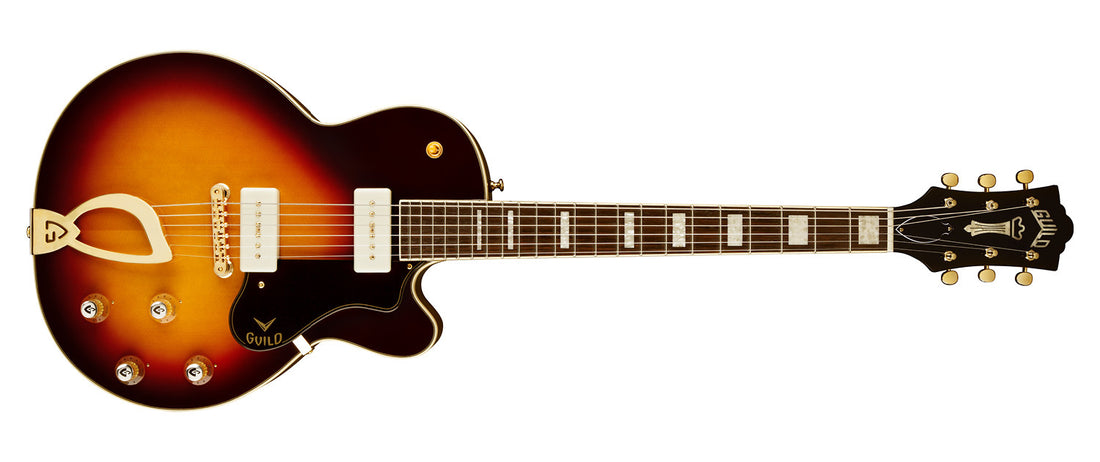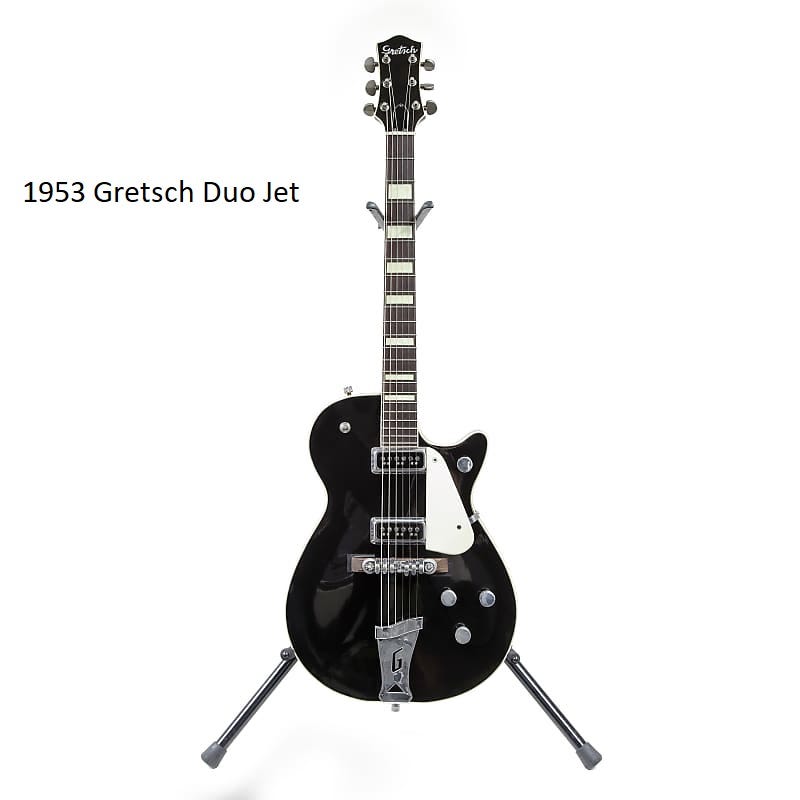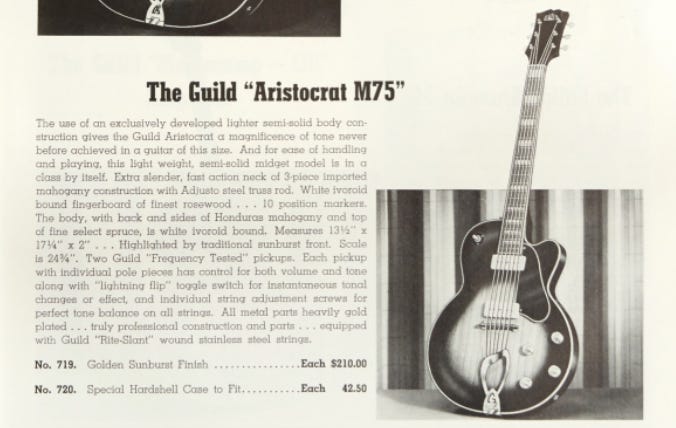Guild Guitar Company was formed in 1952 and began production of full-depth hollowbody electrics in 1953 followed by flat tops in 1954, and acoustic archtops in 1955 (A-series).
The founders of Guild were Alfred Dronge and George Mann. Dronge immigrated from Poland as a child with his parents and they settled in Manhattan in 1914. By his early 20s Dronge was an accomplished guitarist and eventually went on to partner in a retail music store and repair shop in 1945- Sagman & Dronge in Manhattan.
Dronge bought out his partner after two years and sold the music store shortly thereafter. He was onto another venture… making a killing importing and distributing accordions during the post WWII accordion boom.
Mann was a former VP with Epiphone and didn't make the move when Epiphone relocated the company from Queens to Philadelphia in 1952 after a 4-month union strike. He and Dronge were old acquaintances from Dronge’s retail days.
Mann reached out to Dronge and suggested that between the two founders and their connections it was a good idea to start a guitar manufacturing business. Mann also realized there were plenty of former Epiphone craftsmen who stayed behind, making it that much easier to hire an initial workforce and jumpstart operations.
So in 1952 the guys formed the Guild Guitar Company in Manhattan. The partnership didn’t work out for Mann and he left the business after one year. Dronge carried on and built a solid reputation for Guilds in the jazz and acoustic community.
One of Guild’s earliest guitars targeted jazz players, the M-75 Aristocrat in 1954.
Depending on the lens of history some might say this was a Les Paul wannabe. It’s really more akin to the Gretsch Duo Jet which came out in 1953, so in all likelihood the M-75 was well into the design phase before anyone laid eyes on the Duo Jet.
Despite not having any f-holes the M-75 was a hollow body with a carved spruce top on mahogany. The closed body is intended to reduce feedback as stage volume increases.
Another jazzy feature is the harp tailpiece.
Though the pickups look like P-90s they are not, sort of. The pickups were handmade by Franz in Astoria, (Queens) NY and like a P-90 there are two magnet bars positioned below the coil.
The M-75 lived until 1963 and then disappeared for four years. When it returned in 1967 the guitar had a new name, the BluesBird and early on it was very much the same as the original minus the mahogany body. The new version had a laminated maple body.
More significant changes occurred in 1970 when the hollow body was phased out for a solid body only. Pickups were changed to Guild HB1 buckers and (over time) a phase switch and a stop tailpiece became standard.
Nomenclature changed as well with the introduction of a chrome hardware model, the M-75 Standard. Gold hardware remained an option for the M-75 Deluxe.
The M-75 Aristocrat/BluesBird has been reissued several times since the BluesBird run ended in 1978. The latest model is the purest incarnation of the original and remains a part of Guild’s Newark St. Collection.




